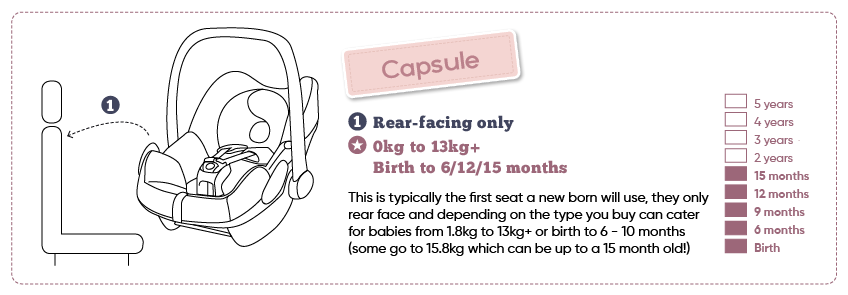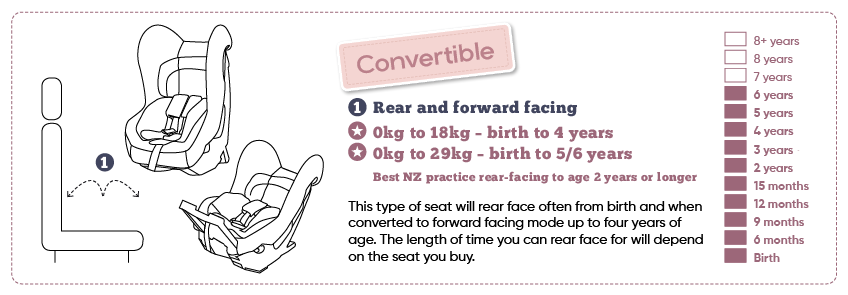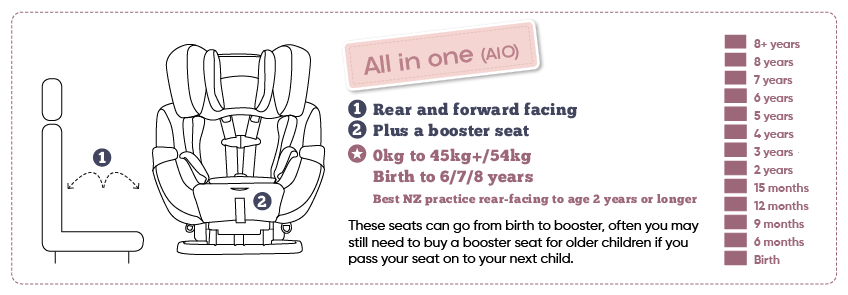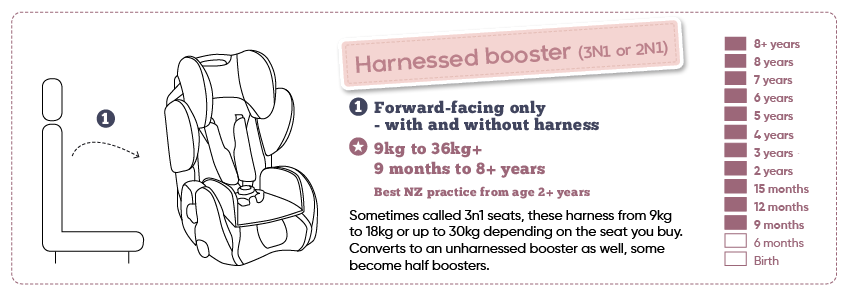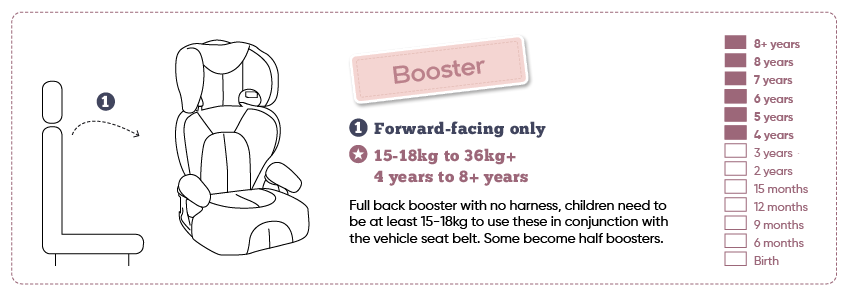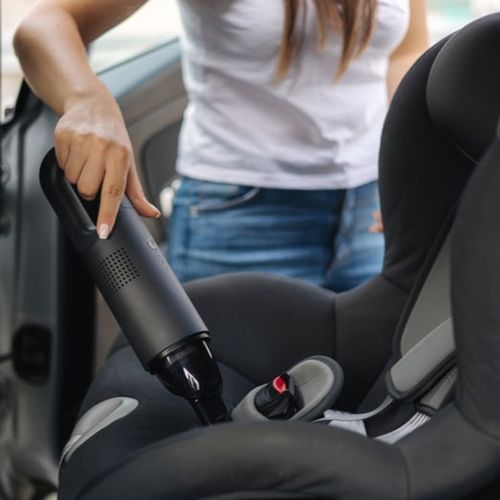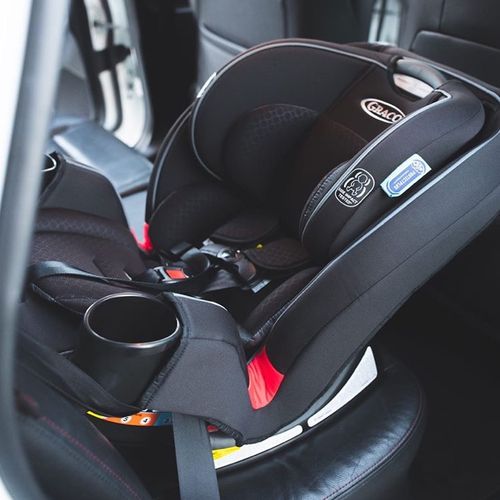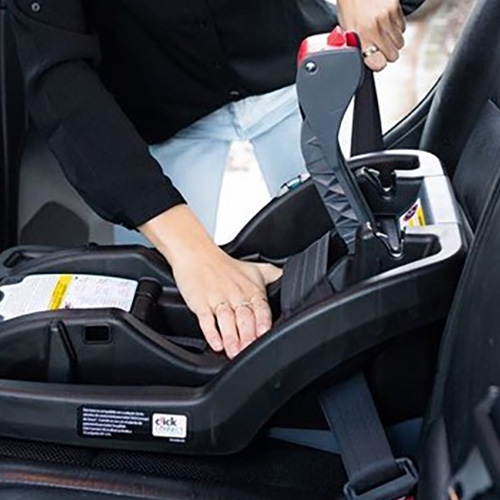Your child restraint buyers guide...
So you are looking for a car seat for your child – there are so many options to choose from so we have made you an online guide to help you through the process. Where possible we recommend coming in to see our trained staff or have a consultation over the phone. Remember every seat we sell or hire will be fitted for you if required.
What car seat does my child need?
This will firstly depend on your child’s height, weight and age. Secondly which seat best fits your child and your vehicle, and just as important can you use it correctly every time?!
Types of car seat – scroll through your options below.
Your questions answered
NO. There are many factors that will affect a child restraint fitting a vehicle.
• length of seat belt
• position of seat belt buckle on a long stem
• contours of vehicle seat
• height of passenger and space allowed behind their seat for rear facing
• size of child car seat may just be too big for the vehicle
The back seat is always safest for anybody to travel in as most collisions that occur are frontal impacts, the middle of the back seat is considered safest (as this occupant is furthest from the sides of the vehicle), next position is behind the passenger and thirdly behind the driver. The driver’s side is technically hit most often in all side impacts and taking children out of the car on the footpath side is more practical than on the road side.
Never place a rear facing car seat in the front with an active air bag. Some frontal passenger ones can be deactivated to allow use, as always back seat is safest, however if you do need to use the front seat for a child put the largest child in the front with the seat pushed back as far as possible. For side air bags in the back seat always ensure you are using a car seat with side impact protection as this protects the child from the air bag. If only one child travelling middle back can be the best option.
Rear facing children are five times safer than forward facing passengers. This is because if the vehicle stops quickly the rear facing child’s head and neck move in one direction and is supported by the shell of the restraint. On average between 1-2 years a child’s head is 25% of their body weight, whereas an adults is only 6.5% – a child’s ability to hold up their own head is no indication of being ready to forward face. Whilst it is not law to rear face beyond around 6 months of age it is certainly best practice to continue doing so and is up to parents to educate themselves on which is best for their child. Current recommendations are to rear face until at least two years of age or as longer as possible.
• My child is happier forward facing – if they don’t know any different then how can you be sure that it is rear facing they are unhappy with. There are just as many struggles getting children in forward facing as rear facing! You can still talk to them as freely regardless of the direction they travel in.
• Their legs will break if we have an accident – there is no evidence to suggest that rear facing increases this risk. And even if it were true you can fix a broken leg more easily than any spinal injury.
• My child is distressed as they can’t see me – purchase a mirror to enable them to see you, you can also see them at a glance in your rear vision mirror.
• My child likes to see where they are going – they will in fact see things for longer out the back window, how many times have you said ‘oh look at the ….’ only to drive past and have your child say ‘where?’!
• Where will they put their legs? – children will happily sit with legs crossed or bent, and in fact one of the most stable positions for hips and knees is the frog position (think hip spika correction casts!). If this is still a concern look at Swedish style seats that allow for more leg room.
The law states that children under the age of 7 year olds must be properly restrained by an approved child restraint appropriate for that passenger (view fact sheet). Also note that if a restraint is available to use in a vehicle then children aged 7 are also required to be in that restraint by law.
To be approved, the restraint must be one of the four standards accepted in NZ. These are;
• Joint Australian/New Zealand Standard (AS/NZ 1754)
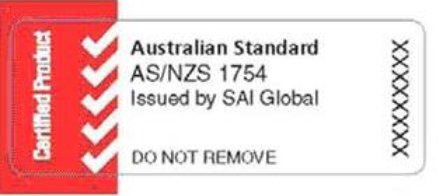
• European Standard
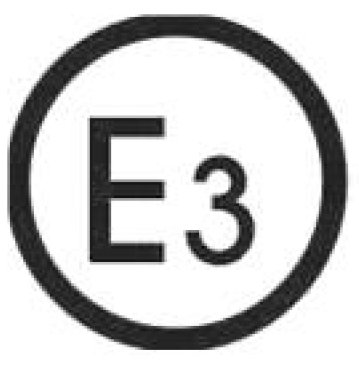
• Yellow NZ Standard – comply with American restraint
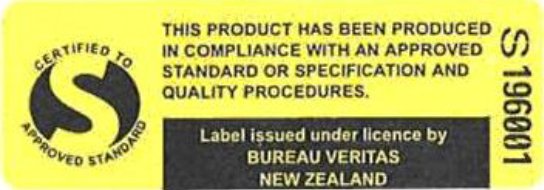
- Japanese inbuilt boosters only found in vehicles. The restraint must also be within its lifespan, an expired restraint will not be accepted and ALL car seats have an expiry date.
Failure to comply with the law can result in a $150 fine per offence! This is issued to the driver of the vehicle as it is their responsibility to ensure all restraints are being correctly used. Some areas will offer compliance if you are not using your car seat correctly (ie not using a tether strap when required to and no bolt available in the vehicle).
Each manufacturer will give a life expectation on the seats that they make; this guarantees that the seat you buy will protect your child to their standards for as long as they say. The manufacturers actually do age testing and know the optimum time their seats will protect for. Other reasons to have a life on car seats can include factoring in deterioration of plastics over time with exposure to heat and or uv light, that over time technology changes hugely and a seat that is over ten years old will not have additional features that newer seats will have.
Click here to see the Brands Lifespan chart >
Whilst our laws have been recently changed to include older children to remain in a car seat for longer this law change does not follow what is known as best practice. It is recommended to booster a child up to 148cm OR up to their 12th birthday, this ensures that the adult seat belt is correctly fitting their body over the thighs/pelvis and shoulder. For rear facing, it is best practice to do this for as long as possible which is at least two years of age. When harnessing a forward facing child it is recommended to go to at least 18kg or at least the age of four; i.e. if your two year old is 18kg harness them until four years as a minimum, if your child is four years old and 15kg go to 18kg as a minimum.
Children outgrow car seats in height or weight. Weight limits will differ between brands so check each seat you are looking at. Outgrowing in height for rear facing is usually when there is less than one inch of shell above the child’s head, forward facing is usually eyes and ears level with the top shell of the restraint.
Legally, seven year olds do not require a restraint any more if there is no restraint available for them. If one is available then seven years olds must use that restraint. The general five step test questions for best practice recommendations are; • can your child sit on the vehicle seat with their bottom all the way back?
• do their knees bend comfortably over the edge of the vehicle seat?
• sitting correctly as above does the seat belt cross their shoulder and not touch their neck?
• is the lap belt as low as possible ideally touching the thighs?
• can they stay seated like this for the whole trip? You need to answer yes to ALL the above before considering not using a restraint for your child passenger.
Generally if a restraint feels too loose when fitted it is due to the seat belt or latch webbing not being pulled tightly enough. You should be able to kneel into the restraint and pull the webbing/belt as tight as you can, apply a locking clip or use the inbuilt one if applicable and this should secure more firmly. Sometimes your vehicle seat shape can prevent a tight fit. If you or your local Baby On The Move child restraint technician cannot secure the seat firmly then look at using a different car seat in your car.
This depends on your restraint and your seat belts (see ELR and ALR seat belts below). Please check your manual for your specific car seat to see if one is required or not as they are not always needed. Most quality European standard seats have either inbuilt locking clips or have one provided to use while some do not require one at all. All American ‘S’ approved harnessed seats require a locking clip and Australian standard seats can have inbuilt ones or not require one at all. Most Australian harnessed seats can have one added to ensure a tighter fit, however European seats can work on a ‘weave’ fit, and these seats cannot have a locking clip added.
Often the answer is no. If your belt is too short and you are using a European standard seat, by lengthening the seat belt you will put the buckle in the wrong position to allow the ‘weave’ or ‘wrap around’ method not to work. These extension belts can be handy if using with a booster seat and seat belt combination, especially if you have three seats across the back of the vehicle that are close together and don’t allow for a hand to fit down the side to buckle in! Make sure this does not alter the belt placement on the child though.
Quite likely! A lot will depend on the size of your restraints and the contour of your vehicle seats. Some seats are quite bulky and others are designed with multiple children in mind. Treat your back seat like a jig saw puzzle, it is a matter of finding which seats will work with your fittings, contours and needs for each child. Often it is easier to physically put the seats into your car than to send measurements as measurements do not take into account the shape of the restraint in seat height (ie does it sit higher off the vehicle seat allowing another restraint to sit close to it, or down low and not allow another seat to butt up to it?) and it may not show if the seat is narrower at the back than at the front.
We are trained professionals
At Baby On The Move we are Child Restraint Technicians and are trained specifically to install varying types of car seats and can offer you advice on which restraints will be suitable for your needs. This is a Service IQ/NZ Transport Agency approved course which has a theory and practical element.



